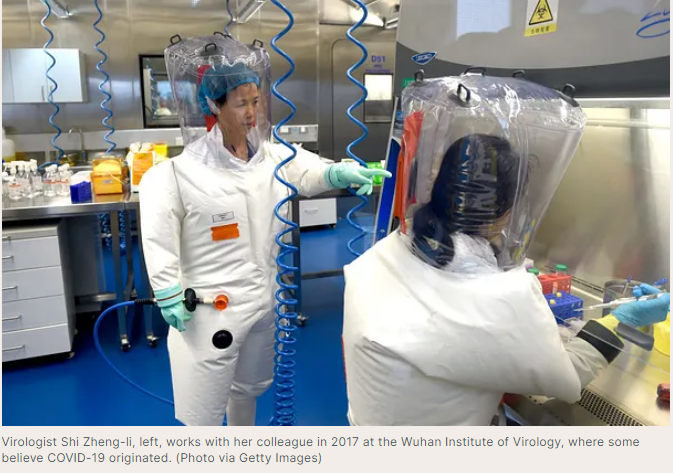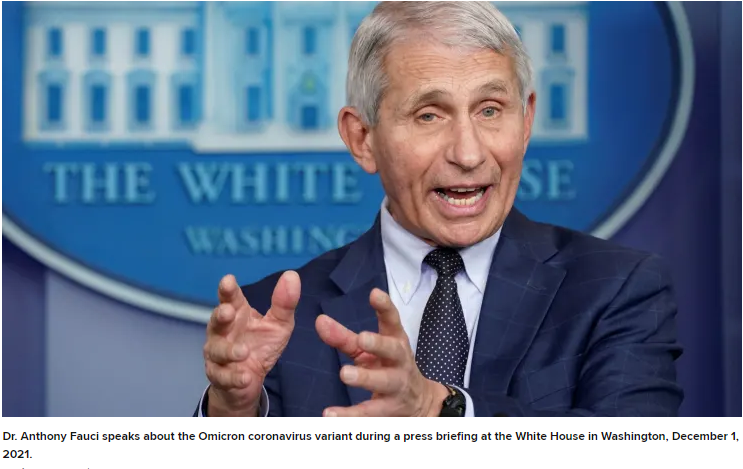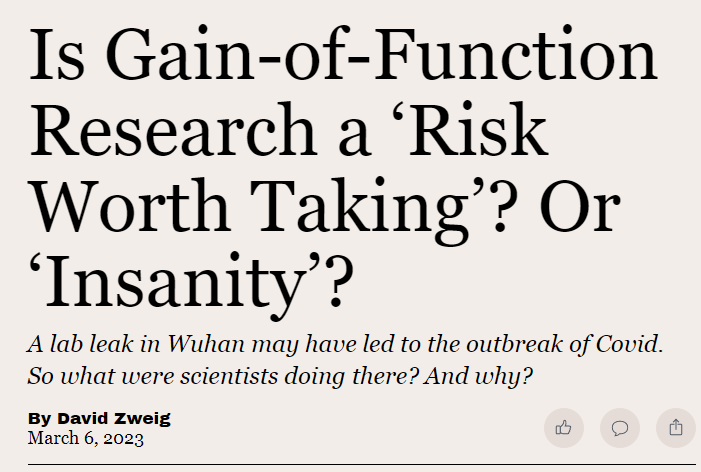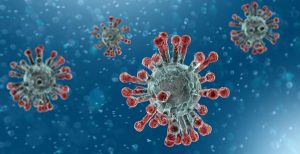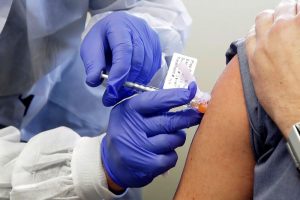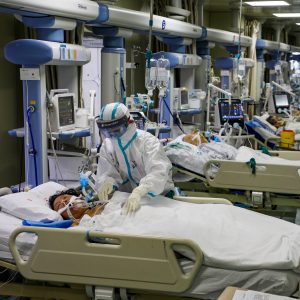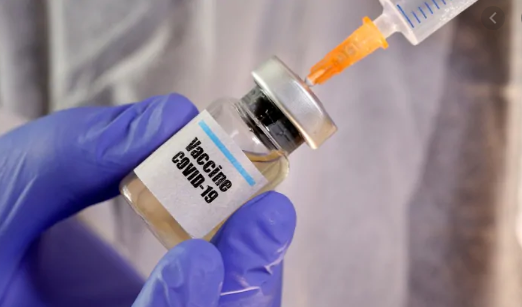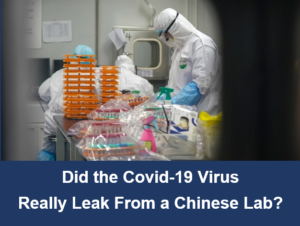 For the past three years, our world suffered through a crisis with colossal confusion as the Covid-19 pandemic ground us down. Seven million people died from coronavirus complications. Countless fell ill from the bug, including me. We struggled to understand what the culprit was. We searched for ways to make it stop. Now, that’s done and we need to know how the pandemic happened. That leads to ask, “Did the Covid-19 virus really leak from a Chinese lab?”
For the past three years, our world suffered through a crisis with colossal confusion as the Covid-19 pandemic ground us down. Seven million people died from coronavirus complications. Countless fell ill from the bug, including me. We struggled to understand what the culprit was. We searched for ways to make it stop. Now, that’s done and we need to know how the pandemic happened. That leads to ask, “Did the Covid-19 virus really leak from a Chinese lab?”
There’s no question the Covid-19 virus—Coronavirus formally known as SARS-CoV-2—originated in the city of Wuhan, China. That’s beyond doubt. What’s unknown is where in Wuhan it started. One theory is the virus transferred to a human from an animal (specifically a bat) at the Wuhan Wet Seafood Wholesale Public Market. The other suspicion is the virus accidentally escaped during a Gain-of-Function Research (GoFR) project at the Wuhan Institute of Virology (WIV) and the facts are covered up by the Chinese Government along with complicit knowledge by top-tier health officials in the United States of America.
Does this sound like a far-fetched bat story or some crazy Covid conspiracy theory? Maybe and maybe not. Let’s take a look at what we can find of the case facts. Then make a cautious, yet credible, conclusion.
When Covid arose, I wrote two blog posts trying to make sense of this thing. One was understanding the viral mechanism and how to guard yourself from transmission. It’s titled Just How Deadly is Novel Coronavirus and Covid-19. The other, titled Why it Takes so Long to Make a Coronavirus Vaccine, was understanding how a Covid vaccine was made and the risks associated with injecting it. Looking back, both articles have somewhat stood the test of time. However, one thing hasn’t, and that’s my original buy-in to the bat-at-the-marketplace hypothesis.
I’m not going to review the pathogen nor the vaccine in this piece. I’m not going to debate the mask and lockdown mandates, not the social distancing, the hand washing, nor the surface wiping—never mind the punitive measures and ostracization for non-compliance to public health orders, nor the public paranoia of the disease. I’m not going to argue for or against the jab. And I’m certainly not going to weigh the immense social costs including a rotting mistrust of politicians, bureaucrats and their institutions, financial devastation, and mainstream/legacy media’s failure to be impartial, not to mention the developmental setback in children and the inhumane isolation of the elderly. I’m just going for the truth of where the Covid-19 virus originated, although that may never be conclusive.
A fundamental question: Why does the truth matter—the truth of where the Covid-19 virus came from? Here’s an opening statement by Chairman Brad Wenstrup from the March 08, 2023, United States Select Subcommittee on the Coronavirus Pandemic: We emphasize how knowing the origin of the virus is essential to helping predict and prevent future pandemics, protecting national security, and preparing for the future. We pledge to thoroughly, responsibly, and honestly investigate the origin of Covid-19.
Witness Dr. Jamie Metzl, Ph.D., said, “If we do not get to the bottom of what went wrong with the Covid-19 pandemic, if we fail in our efforts to fearfully understand all shortcomings and shore up the vulnerabilities this crisis has so clearly exposed, the victims of the next pandemic, our children and grandchildren, will ask us why we failed to protect when we knew what was at stake and had the chance.”
This said, it’s a must to look at the two suspected outbreak locations.
The Wuhan Institute of Virology has two buildings. One is the Xiaohongshan campus, which is an older, biosafety level 2 (BSL-2) facility. The other is a BSL-4 campus called Zhengdian that was opened in 2018. Xiaohongshan is eight miles from the Wuhan market, and Zhengdian is 18 miles from the market.
The Wuhan Wet Seafood Wholesale Public Market is a busy and crowded place near the center of the city of 8.7 million people. Like its name implies, the market primarily sells fresh seafood kept alive in wet storage tanks. As value-added commerce, the market also offers other live creatures such as foul and mammals.
The first recorded Covid-19 cases occurred in a cluster of workers at the Wuhan Market in late November/early December of 2019. A tracking map clearly detected exposures spreading geographically from the market into the city in general. Officials quickly ordered a lockdown and the news spread to a watchful world.
So did the virus. By March 2020, the pandemic was international and all sorts of authorities—political, health, security, and private interests—scrambled (panicked might be the right word) to do, or be seen doing, something to curtail this biological forest fire. We all know how that played out.
Placing blame wasn’t the height of priorities in the early Covid stages. The general consensus, or the official line, was the virus was organic in origin, or what’s termed a natural zoonosis, and bore the biological signature strikingly similar to a known coronavirus circulating in Chinese horseshoe bats. The obvious conclusion seemed to be that since the virus first appeared in people at the market and the virus was the same category as the SARS-CoV-2 bat virus well-known to transmit from animal to human, then—obviously—the origin came from an infected live bat held in captivity at the Wuhan Public Market.
Spoiler Alert. It’s now established there were no bats at the Wuhan Market. There was no market for bats at the market so there were no bats there. To quote the recent US Select Committee report: There is no evidence of bats at the market. There is no evidence whatsoever it was organic, animal caused. There is extraordinary evidence that this virus came from a lab.
So, let’s look at what was going on at a Chinese lab in Wuhan.
There’s quite a history of relations between the United States health research authorities and their Chinese counterparts. Politically, the Chinese Communist Party (CCP) under Xi Jinping has prioritized health research and medicinal development. Part of the push is to elevate China’s standing in worldview as an emergent capable of competing with first-world countries. To achieve this, China has tapped into outside technologies and American finances to achieve one of the CCP’s highest goals—healthcare advancements.
Of the two research labs at the Wuhan Institute of Virology, the newer one at Zhengdian is our suspect. Construction completed in 2015 but it wasn’t cleared to begin full research until 2018. There were rumors of speedy and shoddy construction. One of the top criticisms was the overuse of stainless steel which is particularly vulnerable to the corrosive disinfectants required to clean viral labs. This can lead to catastrophic system failures such as rupturing the sealed ventilation systems used in a clean environment.
I found a Vanity Fair article dated October 28, 2022, that drills deep into what outside authorities determined as “suspicious activity” occurring at the Zhengdian lab starting as early as September, 2019. Although many records at the lab have been buried, destroyed, or concealed, a dispatch by the CCP referred to a biosecurity breach at the Wuhan BSL-4 laboratory (Zhengdian). What followed was an official directive that seemed to come right from the party’s top (Xi Jinping) to make an immediate and urgent effort to contain a biological emergency. The order is called a pishi which is a Chinese government term for being extremely serious and used for the highest priority.
On November 17, 2019, the internal Chinese government data reported the first confirmed Covid-19 case with a Wuhan citizen. The viral genie was out of the bottle, and the CCP issued the official bat-narrative as Covid-19 originating at the Wuhan Wet Seafood Public Market. It was a convenient narrative, and it was adopted by a senior virologist in the United States and White House Adviser to the President—Dr. Anthony Fauci.
So, we’re making a case that the Covid-19 virus didn’t start with a marketplace bat. We’re making a case that some sort of panic situation was going on at the Zhengdian lab. And we’re making a case that the Covid-19 viral signature was very bat-like and could well have transferred animal-to-human.
But a bat at the lab? Well, it turns out the Zhengdian laboratory was the world leader in studying bat coronaviruses which are highly contagious to humans. Enter Dr. Shi Zhengli, aka China’s Batwoman, who heads the bat virus program. She is probably the world’s foremost virologist on bat-to-human transmissions and her program is/was funded by a US-based umbrella called the EcoHealth Alliance. Drilling deep, the follow-the-money trail shows the EcoHealth Alliance is a subsidy arm of the US National Institute of Health (NIH) and the National Institute of Allergy and Infectious Diseases (NIAID) which was overseen by Dr. Tony Fauci.
If you recall in the second paragraph, I used the term “Gain-of-Function Research” or GoFR. This is a highly controversial pathogen amplification procedure that requires a post of its own. GoFR genetically alters an organism to enhance the gene’s biological functions. It’s seen by critics as playing with genetic fire—bordering on biological warfare—and was banned by the Obama administration for being too dangerous and unethical to be undertaken by Americans.
It’s no secret that Dr. Fauci is tied to GoFR. In 2011, Fauci endorsed a gain-of-function research project where colleagues manipulated the avian flu virus A/H5N and made it transmittable through air. When word got about this GoFR, most scientists were outraged, and here’s why. It’s the potential for accidental escape. H5N1 is deadlier than smallpox—it’s extremely lethal to humans. But, by nature H5N1 isn’t easily caught through airborne transmission. Nearly all known cases are among those who had direct contact with birds or bird products.
However, the Fauci-endorsed experiment took the premise that nature could mutate the virus so it could go airborne (like Covid-19) and the best action was to invent the pathogen so a vaccine could be planned if the worst nature case occurred. At the end of the 2011 research, Fauci co-authored an opinion with Dr. Francis Collins, then head of NIH, justifying the project as “a risk worth taking”.
Am I implying that Fauci was complicate in a rogue experiment that created the Covid-19 virus in a lab and then released it on the public? First, almost everyone from amateurs like me to the highest-level professionals do not believe that Covid-19 was purposely let loose on the world to intentionally cause a pandemic. That is just stupid.
No. It’s far more likely a Gain-of-Function research project was underway in the Zhengdian lab where the scientists were genetically manipulating a bat-based coronavirus and it got away on them through a ventilation system malfunction. However, US health authorities were probably aware of work that couldn’t be done under the American flag and wholeheartedly supported it.
Something worth noting is that when the Gain-of-Function Research term became untasteful, the viral study industry rebranded it as enhanced Potential Pandemic Pathogen research (ePPP). This way, GoFR was no more—the program whose name shall not be mentioned was over. Check out this exchange between Senator Rand Paul and Dr. Fauci in a congressional hearing on May 11, 2021.
— — —
Sen. Paul: “The US has been collaborating with Shi Zhengli of the Wuhan Institute of Virology Institute, sharing discoveries about how to create super viruses. This gain-of-function research has been funded by the NIH.”
Dr. Fauci: “With all due respect, you are entirely and completely incorrect. The NIH has not ever and does not now fund gain-of-function research conducted at the Wuhan Institute of Virology.”
Sen. Paul: “This ePPP. So what you’re doing is defining away gain-of-function. You’re saying it doesn’t exist because you’ve changed the definition on the NIH website. What you’ve done is changed the definition on your website to try to cover your ass.”
— — —
Very well, the term for bat virus studies conducted by Dr. Shi Zhengli at Wuhan Virology Institute is/was called enhanced potential pandemic pathogen research and it is/was funded by the EcoHealth Alliance that is/was funded by the NIH and/or the NIAID. It’s just a play-on-words to mask a monstrous mistake. That’s that a high-level representative of the US government was breaching a presidential order and lying about it.
At this stage, blame won’t accomplish anything in the post-Covid-19 story. The fallout should be to clearly understand how this pandemic started—what the root cause was—and how to make sure it never happens again. Prevention being better than cure.
If I can analyze the case facts, as best as can be currently known, this is what I believe happened. And this is only my opinion put forth on a blog post.
I believe the NIH and/or the NIAID agencies provided funding for EcoHealth Alliance to run an American-assisted, gain-of-function research project at the Zhengdian laboratory. The science team artificially built the Covid-19 virus from bat harvestings, and the thing accidentally snuck out on them.
From what I’ve read (and this comes from what appears to be credible information in documents like the recent report by the Select Committee on the Coronavirus Pandemic), there was a faulty ventilation system caused by corroded stainless steel components compromised through incompatible disinfecting chemicals. The virus escaped through a hole, went airborne, multiplied, and infected most of the world.
To back-up my belief, here are highlights from the committee report.
COVID Origins Hearing Wrap Up: Facts, Science, Evidence Point to a Wuhan Lab Leak
WASHINGTON— 08 Mar 2023
The Select Subcommittee on the Coronavirus Pandemic held a hearing on “Investigating the Origins of COVID-19” to gather facts about the origination of the virus that has claimed nearly seven million lives globally. At the hearing, several of the witnesses pointed to how the science, facts, and evidence point to a lab leak in Wuhan.
Key Hearing Takeaways
Knowing the origin of COVID-19 is fundamental to helping predict and prevent future pandemics.
Select Subcommittee Chairman Brad Wenstrup opened the hearing by emphasizing how knowing the origin of the virus is essential to helping predict and prevent future pandemics, protecting health and national security, and preparing the United States for the future. He pledged that the Select Subcommittee will thoroughly, responsibly, and honestly investigate the origin of COVID-19.
Dr. Jamie Metzl, Ph.D., senior fellow at the Atlantic Council said in an opening statement, “If we do not get to the bottom of what went wrong with the COVID-19 pandemic, if we fail in our efforts to fearlessly understand all shortcomings and shore up the vulnerabilities this crisis has so clearly exposed, the victims of the next pandemic, our children and grandchildren, will ask us why we failed to protect when we knew what was at stake and had the chance.”
Mounting evidence continues to show that COVID-19 may have originated from a lab in Wuhan, China.
Dr. Robert Redfield, former director of the U.S. Centers for Disease Control and Prevention (CDC), testified how science indicates COVID-19 infections were likely the result of an accidental lab leak in Wuhan. His conclusion is based on the biology of the virus itself and unusual actions in and around Wuhan in 2019, including gain-of-function research at the Wuhan Institute of Virology (WIV).
Nicholas Wade—the former science and health editor at the New York Times, and former editor of Science and Nature—testified how Drs. Fauci and Collins used unverified data to dismiss the lab leak theory in favor of natural transmission.
Jamie Metzl testified how China’s government destroyed samples, hid records, imprisoned Chinese journalists, prevented Chinese scientists from saying or writing anything on pandemic origins without prior government approval, actively spread misinformation, and prevented an evidence-based investigation.
The mainstream media downplayed—and even denied—the scientific theory that COVID-19 emerged from the WIV.
Nicholas Wade testified about the campaign to discredit the lab leak theory. He pointed out that scientists kept in line with the natural origin camp led by Drs. Fauci and Collins because of their dependence on government grants and that the media failed to challenge the forced narrative.
All witnesses agreed that the possibility of COVID-19 originating from a lab is not a conspiracy theory.
Member Highlights
Subcommittee Chairman Dr. Wenstrup (R-Ohio.) asked witnesses whether it is critical to investigate the origin of COVID-19. All witnesses answered yes. Chairman Wenstrup also raised concern about gain-of-function research, which Dr. Redfield defined during the hearing as altering a pathogen to increase either transmissibility or pathogenicity.
Subcommittee Chairman Wenstrup: “In your expert opinion was the Wuhan Institute conducting gain-of-function research on a batch of coronaviruses?”
Dr. Redfield: “Absolutely.”
Rep. Nicole Malliotakis (R-N.Y.) noted that after raising concerns to experts and the World Health Organization that COVID-19 may have originated in a lab in Wuhan, China, and urging Dr. Fauci to investigate the origins of the pandemic, Dr. Redfield was excluded from calls related to the origins of the pandemic.
Rep. Malliotakis: “Why do you think you were excluded from those calls?”
Dr. Redfield: “It was told to me that they wanted a single narrative and that I obviously had a different point of view.”
Dr. Redfield added: “If you really want to be truthful, it’s antithetical to science. Science has debate, and they squashed any debate.”
Scientists, including Dr. Fauci, then drafted a paper arguing COVID-19’s proximal origins to animals at a wet market.
Rep. Malliotakis: “Do you think that this paper does hide the truth?”
Dr. Redfield: “I think it’s an inaccurate paper that basically was part of a narrative that they were creating.”
Rep. Malliotakis also warned that the National Institutes of Health (NIH) may have been funding gain-of-function research on coronaviruses at the WIV.
Rep. Malliotakis: “Is it likely that American tax dollars funded the gain-of-function research that created this virus?”
Dr. Redfield: I think it did, not only from NIH, but from the State Department, USAID and DOD.”
Rep. Miller-Meeks (R-Iowa), who has expertise publishing in peer-reviewed scientific journals, asked why the scientific community dangerously suppressed evidence that COVID-19 may have originated from a lab.
“There is, as you said Dr. Metzl, extraordinary circumstantial evidence that this came from a lab.
“I don’t know why the authors didn’t want to state this, they did not want to have the scientific conversation and dialogue, why they wanted to obfuscate and suppress the truth, or even have a debate about the origins of COVID-19.
“Was it for personal financial gain? Was it to hide U.S. financial interest into the Wuhan Institute of Virology indirectly? Was it to suppress the revelation that there was perhaps gain-of-function research that had been prohibited in the United States? Or were they concerned that a conspiracy would develop that it was bioterrorism?
“I would state that their suppression and obfuscation has led to the exact mistrust and conspiracy theories that they may have tried to avoid.”
Rep. Debbie Lesko (R-Colo.) and Dr. Redfield discussed unusual actions at the WIV in September 2019.
Rep. Lesko: “Do you believe we can have certainty that the virus did not come from the Wuhan lab and that U.S. funding was not used for coronavirus research?”
Dr. Redfield: “Absolutely we cannot do that. It’s now declassified now, but in September 2019, three things happened in that lab. One, they deleted the sequences. That is highly irregular—researchers don’t usually like to do that. Second, they commanded the command and control of the lab from civilian control to military control. Highly unusual. And the third thing they did, which I think is really telling, is they let a contractor re-do the ventilation system in that laboratory. There is strong evidence there was a significant event in that laboratory in September 2019.”
Oversight Committee Chairman James Comer (R-Ky.) warned that the media downplayed, discredited, and silenced voices of experts sounding the alarm that COVID-19 may have originated from a lab in Wuhan, China.
Chairman Comer: “Would you agree that the scientific establishment used the media to downplay the lab leak theory?”
Mr. Wade: “I think the media was used in this particular campaign to establish the natural origin theory.
“The scientific community is very afraid to speak up on political issues. I think the reason is that government grants are handed out through the system of peer-reviewed committees. You don’t want any single scientist on your peer-review committee to vote against, because you won’t get your grant – it’s so competitive. Therefore, scientists are very reluctant to say anything that’s politically divisive or turn other scientists off against them. This means that they cannot be relied upon in the way that we would like them to be independent and forthright and call it as they see it.”
Comer: “Was there science available to make such an unequivocal statement against the possibility of a lab leak that early on in February of 2020?”
Witnesses Dr. Metzl, Mr. Wade, and Dr. Redfield all answered, “No.”
Comer: “Is the possibility COVID-19 leaked from a lab a conspiracy theory?”
Witnesses answered, “No.”
One source I relied on for this post was a Free Press (via @BariWeiss) article written by David Zweig titled Is Gain-of-Function Research a ‘Risk Worth Taking’? Or ‘Insanity’? In it, Mr. Zweig (who has impeccable journalistic credentials) takes a hard look at gain-of-function, er/ah enhanced potential pandemic pathogens. Here are two of the comments:
I have worked with the federal government for 20 yrs. Spent a year at the CDC. Spent 3 yrs overseeing a team of Nobel prize winning academics.
- Academics care about publishing and scoring points on their peers. Its opens financial doors. It opens doors to awards and accolades, many of which come with a lot of money. It gives them status among their peers. They can be, and often are, single minded and fail to consider the externalities or the ethics of what they are doing they only care about what is possible, not what SHOULD be done.
- Never ever trust a government bureaucrat. They are like academics with tenure. They are constantly trying to justify their existence and protect their positions. They will do everything from hiding information to intentionally misleading watchdogs, congress or the media, to protect themselves or gain budgets and they very often have an eye toward what they will do in the private sector once their pension is set. They will work to please politicians and whichever industry is associated with what they oversee.
I spent ten years as the chief of safety for the International Space Station, so I did a lot of risk analysis. Typically, when evaluating risk one begins by looking at likelihood vs. severity. In the case of a GOFROC/ePPP, the likelihood is obviously not as low as one would like (witness the litany of lab leaks) and the severity is off-scale high, beyond catastrophic. I would call this an apocalyptic hazard. SARS Covid-2 killed something like 7 million souls, with inestimable economic damage. This is a risk level that would be unacceptable in any other conceivable government or commercial application. The only possible way that such a risk could even be considered would be if the benefits to be gained were monumentally rewarding, which it would appear they are not.
Then there is the threat of human error. Systems can be designed to provide extremely high levels of fault tolerance, although only if they are used properly. But people make mistakes. It’s inevitable. They are the most error prone parts of almost any system. No matter your training, no matter your dedication, no matter your focus, you will eventually make a mistake. The job will become routine. The risk mitigation procedures will become onerous. The desire to circumvent established protocols will creep in. And mistakes will happen.
Were I king for a day I would outlaw this research with the direction to find a way to do it only via computer simulation. Even this fails to eliminate the threat of bioterrorism, but at least it would eliminate the possibility of a physical leak. And I certainly wouldn’t pay to have it done in a lab run by a government infamous for secrecy and deception.
Breaking News 10March2023




